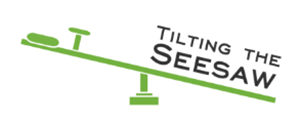Focussing

Focussing
One of the key themes that emerges from students with autism is that they would like to be more informed about what is happening during their day.
Consider: is the student prepared for changes in their routine? Are they prepared for what happens in the day? In more ways than just verbally?
Many students with autism have a feeling of being excluded. Social isolation and exclusion may lead to poor self-esteem.
Consider: are groups structured to include the student with autism? Does the student have other students to play with at breaktime? Friends?
the student show distress in certain sensory environments, does the student avoid, seek out sensory information.
The environment in which a student works in can greatly impact on how well they are able to show their talents. Sights, sounds, smells and touch can all influence the student’s learning.
Consider: does the student show distress in certain sensory environments, does the student avoid, seek out sensory information.
Challenges with communication is a common trait of autism. How teachers communicate with the student and how they communicate with teachers needs to be thought about.
Consider: How do adults communicate best with the student? How do teachers get across understanding? Has the student got alternative forms of communicating other than speech?
These skills help students to plan, organise, execute and sequence tasks. Many students need support in these areas.
Consider: does the student have organising tools or have been taught time management skills been taught? Are alternative ways of recording utilised?
Emotional and self-regulation is used to help control our impulses, regulate our behaviour and stay calm. It is important for social and emotional well-being, academic and social success.
Consider: have strategies been taught to support the student to regulate emotions?
For some students, knowledge about autism and self may contribute to a feeling of self-worth and understanding and a sense of belonging.
Consider: is disclosure of autism an option? How do parents feel about this? Have there been opportunities to discuss this? Do the class know and have some understanding of neurodiversity? Are the student’s interests considered?
Traditional forms of motivation may need re-examining for students with autism.
Consider: have alternative ways of motivating been considered?
At the heart of Tilting the Seesaw for Teams lies an understanding that structure needs to be in place for a student with autism. Structure creates predictability and clearer expectations and reduces anxiety.
Consider: are work systems in place for the student? Are visual strategies used as a matter of course? Are visual organisation tools used?
Course
Explore Tilting the Seesaw
Templates
Teacher away for two days story
A story for information for when the teacher is away on a course
Finding out about school activity
A story for information to understand what a student does and doesn’t like at school
Games
Matching game activity
Visual activity to understand what a student does and doesn’t like at school
Next steps.
When you have completed the Focusing step, you can go to the third pre-course module: Developing a Hunch

